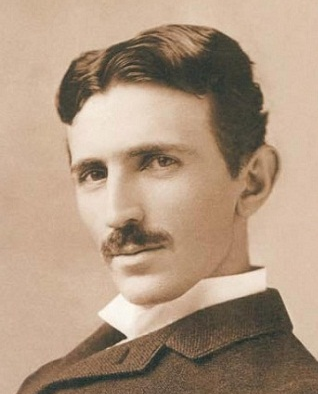
Today, the “action” is in moving small amounts of electrons through and across bits of silicon. A century and a half ago, the “action” was related to moving massive quantities of electrons through throbbing power grids. The story of Nikola Tesla – whose path was bound up with that of Thomas Edison – takes place in that earlier age of electrons.
Nikola Tesla arrived in New York city, on June 6 of 1884. He brought with him a degree in electrical engineering from the Austrian Polytechnic in Graz, a reputed photographic memory, and, reportedly, periods of affliction during which he would see blinding flashes of light, sometimes accompanied by hallucinations linked to a word or a thought which he could envision in vivid detail.
Working for the Telephone Company in Budapest Hungary he had developed the first loudspeaker. Working for Thomas Edison’s European company he had conceived of a new type of motor (an ‘induction motor‘), and of electrical devices that used rotating magnetic fields (what would eventually become “alternating current”).
In Tesla’s hand was a letter to Thomas Edison, recommending Tesla for employment.
Tesla was hired by Edison, and given the job of redesigning Edison’s motor and generators, which were notoriously inefficient. Tesla was paid $18 a week. When he completed his task, after prodigious labor, and requested a raise to $25 a week, he was refused. Tesla quit. One of Tesla’s next jobs was a ditch digger, including digging ditches for Thomas Edison’s company. The ensuing rivalry and relationship between the young Tesla and the established Edison reflect – and may actually dwarf – any such rivalries in modern Silicon Valley.
Tesla was fundamentally convinced that the proper way to generate, transmit, and use electricity, was in a poly phase manner, “alternating current”.
Edison’s systems were all based on “direct current”. Edison was electrifying entire cities based on direct current.

